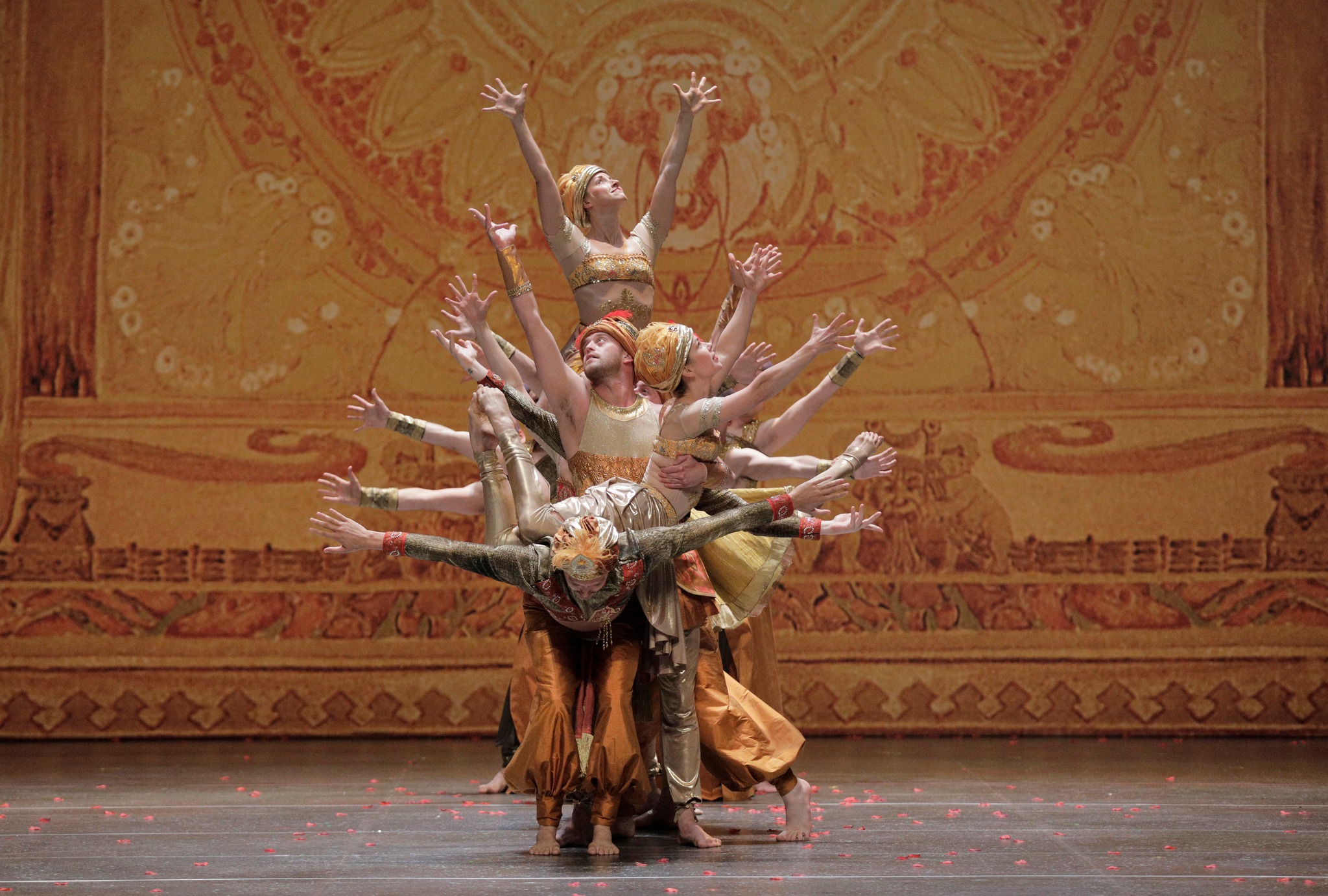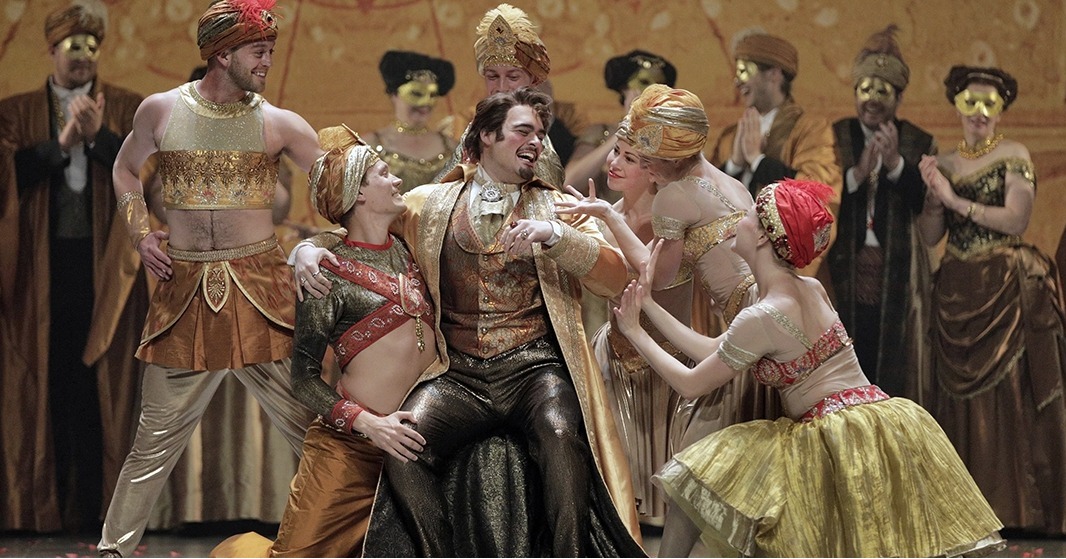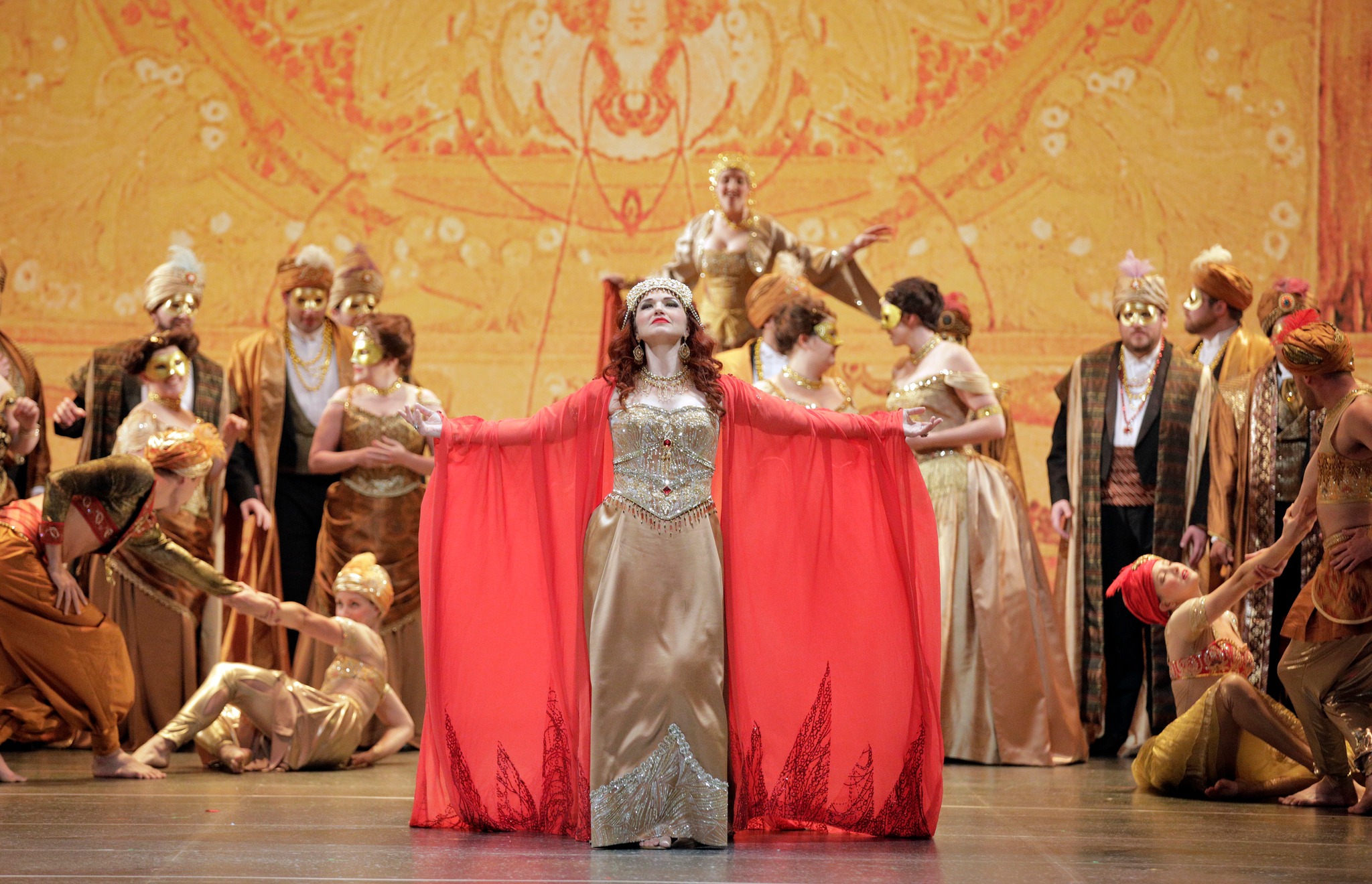SALT LAKE CITY — Despite having some of the most famous music in the world, Jules Massenet’s Thaïs is rarely performed. Why? Because the title role is practically impossible to sing. After eight years of production and having its planned May 2020 run dismantled by Covid, Utah Opera has finally staged the Utah premiere of Thaïs, a rare treat for local audiences.
The opera, dripping with Frenchness despite taking place in 4th Century Egypt, premiered in Paris in 1894, and is based on a novel by Anatole France (with libretto by Louis Gallet). It begins with an austere monk named Athanaël troubled by a dream of Thaïs, an actress and courtesan he saw years ago. He believes it’s his duty to convert her from her wicked ways and “marry her to God.” He arrives in her debaucherous, orgiastic palace, and after refraining from the pleasures of the flesh and enduring mockery, ultimately delivers his message.
It turns out, that despite her popularity and wealth, Thaïs has been wondering how long her lifestyle will last (“Dis-moi que je suis belle” or “Tell me I’m beautiful” she pleads to a mirror in the most famous aria), and Athanaël’s hard-won message arrives at the right time.
Italian director Andrea Cigni’s staging is a rich spectacle with vivid images. His approach to movement and choreography created remarkable visual interest and storytelling throughout the opera.

But first, the singing. Thaïs was written as a showcase of one of Massenet’s favorite sopranos. In the lead role, Texas resident Nicole Heaston had a silky, powerful delivery, impressive range, and strong acting. “Dis-moi…” was a magnificent, soaring performance with effortless-sounding movements up the scale. She also displayed a great contrasting vocal blend with Troy Cook’s Athanaël.
Cook commanded the stage with a powerful presence, strong, masculine baritone and sonorous vibrato. His movements from low to high were legato and emotive, and his descending phrases powerful. Cook also showcased the best acting onstage, especially his discomfort when getting decked out in worldly garb. As Thaïs’ current lover Nicias’, Dominick Valdé’s tenor was golden as his character, and I heard patrons comment that his was their favorite vocal performance.
As good as the singing was, instrumentation and staging—especially dance and movement elements—took Thaïs over the top. Cigni plays up the contrasts of the opera between light and dark, fluid and rigid. For example, the monks and nuns’ geometric movements butt up against the wild, writhing energy of Thaïs’ palace.

For the celebrated, instantly recognizable “Méditation”, Minnesota choreographer Heidi Spesard-Noble outdid herself, with spectacular staging featuring Repertory Dance Theatre. Gasps were heard in the audience as a dancer emerged from behind Thaïs as her spirit form. The number—which featured dancers wearing minimal, flesh colored dance belts— included numerous lifts symbolizing Thaïs’ soul lifting from the worldly to a new, spiritual calling. And the final image (a crucifixion, dreamed up by Cigni) was unforgettable. “Woo! That was phenomenal!” I wrote in my notes.
Costumes by Lorenzo Cutùli of Italy (who also served as scenic director) were one of the many stars of the show. Intermission supertitles boasted the production included 800 costume pieces and featured gold gilding and leafing. The color permeated the denizens of Alexandria, with pops of red as a sumptuous accent.
Nicias’ costume was appropriately outrageous; it’s astounding that so many shades of gold can work together—from his silk, sequined robe, to his bedazzled vest and deceptively dark gold top hat. In stark contrast, Athanaël’s robe, which looked stark black in the monk’s hermitage, was revealed to be a gorgeous midnight blue once the character arrived in gilded Alexandria.
Wigs by Kate Casaslino (based in New York) were outstanding, as Athanaël and Thaïs’ flowing locks looked remarkably real. Intermission supertitles boasted that 27 handmade wigs were made, and Athanaël’s alone took 60 hours to make. It showed.

Cigni breaks literalism with two eye-popping abstract set pieces. Thaïs’ bed is represented by a giant framed portrait of 16th century Italian painter Agnolo Bronzino’s “An Allegory with Venus and Cupid,” supported by a bed of fake roses. This striking image demonstrated Thaïs’ devotion to the goddess and allowed her to physically interact with the deity, too—with her whole body, nonetheless.
Less successful was the mirrored mountain of the desert scene. In the post-show Q&A, Cigni said he wanted the audience to be blinded by the light and heat of the desert. That is all well and good, but a large piece of glass directly reflected the full force of a stage light directly to my seat for all of Act 3, Scene 1—at a power one might call hazardous to one’s health. The only way to escape it was positioning my head behind the person in front of me, blocking most of the stage from view. What good is a set piece if it prohibits the audience from looking at the scene in which it features? I recommend Utah Opera consider dulling the reflection for future performances.
Utah Opera’s website states the show’s content is equivalent to a PG-13 film, which is probably true. Sexual touching over clothing occurs among main characters a few times, and while the larger cast doesn’t touch anything super naughty during the roughly 20-minute orgy scene, the simultaneous rhythmic caressing of dozens of couples and groups did make for a sensual juggernaut.
Thaïs is a strong contender for best choreography in Utah theatre for 2024, and features more spectacular moments than this review can mention. With strong singing, orchestration and staging, Utah Opera presents an incredible opportunity to see where some of the most famous pieces in the modern classical repertoire come from.
I don’t often shout at the end of a scene — but after Méditation, the “whoos!” erupted from me all by themselves. Just one in an audience co-experiencing the transcendental. Now, that was something.
[box]Thaïs plays Saturday, Monday, Wednesday, Friday and Sunday, May 4-12 at the Capitol Theater (50 West 200 South, Salt Lake City). Tickets are $10.50-110. For more info, visit https://usuo.org.[/box]

